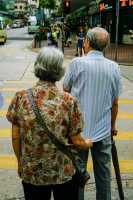MedicalResearch.com Interview with:
Dr Holly Morgan M.B., B.Ch.
Clinical Research Fellow and REVIVED investigator
King's College London
MedicalResearch.com: What is the background for this study?
Response: Coronary artery disease is the commonest cause of heart failure. Whilst individually tailored pharmacological and device therapy (optimal medical therapy, OMT) is the cornerstone of management of ischemic heart failure, rates of death and hospitalization for heart failure remain unacceptably high in this population. Given the causative relationship between coronary disease and heart failure, coronary revascularization has long been considered as a treatment option for these patients. Whilst there is randomized evidence to support surgical revascularization with coronary artery bypass grafting (1), none previously existed for percutaneous coronary intervention (PCI) in stable ischemic left ventricular dysfunction. Despite this, patients are frequently offered PCI in this setting (particularly if unsuitable for surgery); driven by the belief that hibernating myocardium will improve in function if blood flow is restored, regardless of the revascularization method. This approach was supported in some international guidelines, though recommendations varied.
The REVIVED-BCIS2 trial aimed to establish whether revascularization with PCI in addition to OMT would improve event free survival in patients with ischemic left ventricular dysfunction, when compared to OMT alone (2). Inclusion criteria included a left ventricular ejection fraction of ≤35%, extensive coronary artery disease (British Cardiovascular Intervention Society jeopardy score ≥6, indicating significant stenoses in the left main coronary artery, proximal left anterior descending coronary artery, dominant circumflex artery, disease in multiple vessels or a combination of these) and viability in at least four dysfunctional myocardial segments which were amenable to PCI. The main exclusion criteria were acute myocardial infarction within 4 weeks of randomisation, angina which limited the patient’s quality of life or decompensated heart failure or sustained ventricular arrhythmia within 72 hours.
The primary composite outcome was all-cause death or hospitalization for heart failure; minimum follow up was 24 months. Key secondary outcomes included the change in left ventricular ejection fraction from baseline to follow-up at six and twelve months, myocardial infarction, unplanned revascularization and quality of life assessed with the Kansas City Cardiomyopathy Questionnaire and EQ-5D-5L.
(more…)









 Joanne B. Newbury, PhD
ESRC Postdoctoral Fellow
King’s College London
Social, Genetic & Developmental Psychiatry Centre
Institute of Psychiatry, Psychology & Neuroscience
London, United Kingdom
MedicalResearch.com: What is the background for this study?
Response: Urban living is one of the most well-established risk factors for adult psychotic disorders such as schizophrenia. However, less is known about the role of the urban environment in subclinical psychotic experiences in childhood and adolescence, such as hearing voices and extreme paranoia. These early psychotic experiences are a developmental risk factor for adult psychotic disorders and a range of other serious mental health problems such as depression and anxiety.
It is therefore important that we understand what factors might contribute to the development of early psychotic experiences so that we might be able to intervene and prevent their onset and progression.
In a cohort of over 2000 UK-born children (The Environmental Risk Longitudinal Twin Study), we have previously shown that subclinical psychotic experiences are also around twice as common among children and teenagers raised in urban versus rural settings. We have also shown that this appears to be partly explained by social features in urban neighbourhoods such as higher crime levels and lower levels of social cohesion.
However, no studies have examined the potential link between air pollution and psychotic experiences. This is despite air pollution being a major health problem worldwide (particularly in cities), and despite emerging evidence linking air pollution to the brain.
Joanne B. Newbury, PhD
ESRC Postdoctoral Fellow
King’s College London
Social, Genetic & Developmental Psychiatry Centre
Institute of Psychiatry, Psychology & Neuroscience
London, United Kingdom
MedicalResearch.com: What is the background for this study?
Response: Urban living is one of the most well-established risk factors for adult psychotic disorders such as schizophrenia. However, less is known about the role of the urban environment in subclinical psychotic experiences in childhood and adolescence, such as hearing voices and extreme paranoia. These early psychotic experiences are a developmental risk factor for adult psychotic disorders and a range of other serious mental health problems such as depression and anxiety.
It is therefore important that we understand what factors might contribute to the development of early psychotic experiences so that we might be able to intervene and prevent their onset and progression.
In a cohort of over 2000 UK-born children (The Environmental Risk Longitudinal Twin Study), we have previously shown that subclinical psychotic experiences are also around twice as common among children and teenagers raised in urban versus rural settings. We have also shown that this appears to be partly explained by social features in urban neighbourhoods such as higher crime levels and lower levels of social cohesion.
However, no studies have examined the potential link between air pollution and psychotic experiences. This is despite air pollution being a major health problem worldwide (particularly in cities), and despite emerging evidence linking air pollution to the brain.